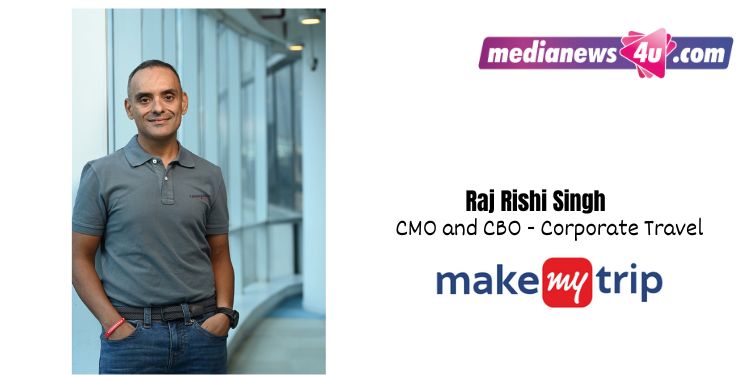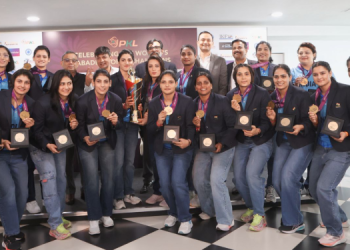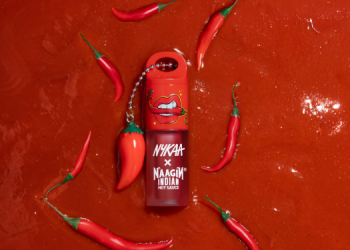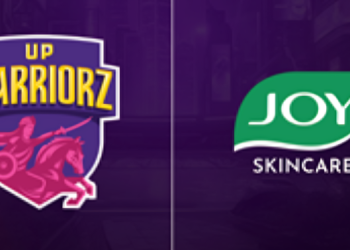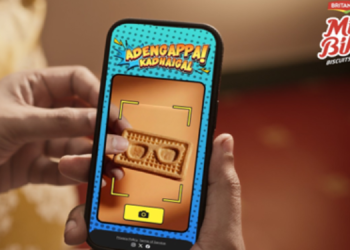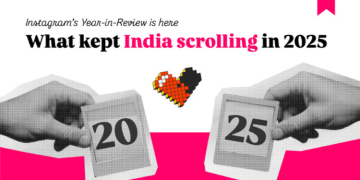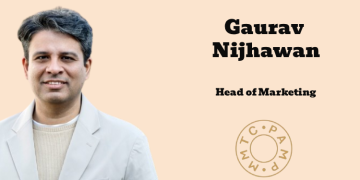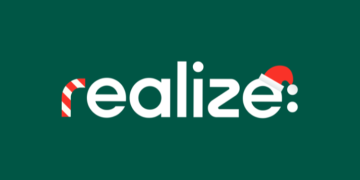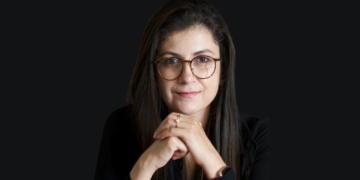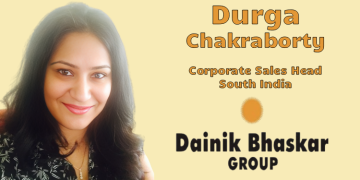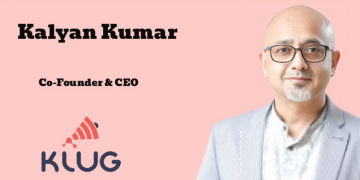Nasdaq-listed online travel firm MakeMyTrip clocked revenue of US $593 mn (IFRS) in the year ended March (FY) 2023, riding robust recovery in travel. While the two interim years bore the brunt of Covid waves, this figure was also higher than the company’s FY 2020 revenue of $512 mn.
FY 2023 saw air ticketing contribute $280.1 mn to revenue (adjusted margin), with hotels and packages adding $259.8 mn. In the quarter ended September 2023, MakeMyTrip raked in $168.7 mn in revenue. While air ticketing still garnered the lion’s share of $80.3 mn, hotels and packages followed closely with $75.7 mn.
There has been a conscious effort to grow the hotels and packages part of the business, says Raj Rishi Singh, CMO and Chief Business Officer (Corporate Travel), MakeMyTrip. Five to six years ago, MakeMyTrip was known primarily for its flight product, he points out.
In the brand’s campaign launched in November this year, actors Alia Bhatt and Ranveer Singh drive hotel bookings on the MakeMyTrip app targeting new users. They have been endorsing the brand since early 2016.
“If you see our last six or seven campaigns, they’ve been building consideration for hotels and we’ve taken various routes to it,” notes Singh. These routes have included announcing new products, underlining savings and communicating that the platform has the widest range of hotels available in India.
“And clearly, over the last four or five years, it’s moved the needle for us. If you see the data on consideration and top of mind recall, we are India’s leading brand by a distance. So we have become the go-to brand for Indians for both flights and hotels. The journey has paid off and why that’s happened is we’ve remained very consistent,” he explains.
The brand strived to create fresh advertising while sticking with the Bhatt-Singh duo. The communication was coming from ‘one universe’, notes the CMO.
He elaborates, “If you see our ads, they come from one universe and with the same celebrities. That’s clearly paid off for us because today’s world is very cluttered. The same consumer is on mobile, on connected TV or television, on Spotify. So you have to really spend because media has become more expensive. The cost of a 20-seconder during, for example, a cricket match is almost unaffordable right now. You have a consumer who is bombarded with advertisements. As a brand, you have to always break the clutter. Today, if you see even a feature film with Alia and Ranveer together, your first thought must be a MakeMyTrip ad.”
“Hence we don’t really have to spend an extra amount of energy or investment in breaking clutter. So the message delivery becomes sharper. We have seen again and again that the message that we want to convey gets clearly registered in the consumer’s mind. Because the first barrier – of which brand you’re talking about – is super clear on second zero. And hence the focus of the consumer is on the message. With the current campaign as well, both viewability and association with the brand is great. When we measured what percentage of the consumers understood our message, it was greater than the average advertisement,” he adds.
A significantly large percentage of consumers still book hotels offline, observes Singh. There is a large segment of walk-in bookings, and the task is to bring them online. Walk-in booking is the predominant behaviour even in the top 20 towns, he explains. While MakeMyTrip’s campaigns are currently focussed more towards the urban and affluent consumer, the opportunity exists in tier one as well, he says.
Post Covid Trends
Post Covid, there are some trends which are ‘slightly more stark’, observes the spokesperson. The first that MakeMyTrip has noticed is that at least in the top households, travel is moving from being a discretionary spend to something that is planned as an essential.
“Travel is becoming a way that people are expressing themselves. When we do surveys, we also figure out that a lot of youth think that travel is a way of self development. So, it’s no longer a discretionary spend. It’s pretty much an essential for the top households. Secondly, pre-Covid people would generally take one long break and a couple of short breaks. Now it’s become one long break and a lot of short breaks. Every weekend is becoming an opportunity for us and we are clearly seeing spikes on weekends. We are seeing big spikes coming on long weekends,” he reveals.
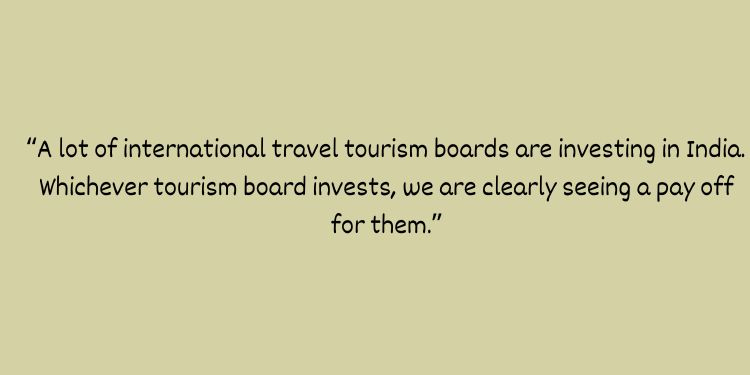 Another trend is that ‘nearby’ holidays are taking precedence. That links back to the weekend spikes.
Another trend is that ‘nearby’ holidays are taking precedence. That links back to the weekend spikes.
“With improved infrastructure, people are driving to new locations. And because of this phenomena, alternate accommodation or what we call homestays is becoming extremely relevant,” he adds.
MakeMyTrip is building on these opportunities, tailoring product offerings for people to discover nearby places.
Around Independence Day 2023, the brand announced that it had joined hands with the Ministry of Tourism to showcase 600-plus offbeat destinations. A microsite ‘Traveller’s Map of India’ provided an interactive platform for travellers to discover ‘lesser-known tourism gems within India’, picked on the basis of user preferences.
The company selected destinations based on searches on the platform, picking lesser known tourist spots or places that are popular only in certain pockets. A dedicated segment on the MakeMyTrip site now lists ‘Lesser-Known Wonders of India’. It features destinations like Yelagiri in Tamil Nadu, Mandarmani in West Bengal, Shoghi in Himachal Pradesh and Vengurla in Maharashtra.
“We are dialling in on this opportunity of domestic travel. That said, now international travel is also recovering. In fact, outbound travel in India is supposed to grow faster than even domestic travel. There are two or three forces driving that. Household income in the mid and top segment is growing, which basically means that there are more discretionary spends available for an outbound holiday versus an inbound holiday. The second thing is that supply is growing,” he explains.
MakeMyTrip has evidenced new international destinations picking up with direct flight connectivity. Singh cites the case of a hitherto unheard of destination like Baku in Azerbaijan, which has come into consideration for Indians with the launch of direct flights by Indigo.
“The third thing is that a lot of international tourism boards are investing in India. Whichever tourism board invests, we are clearly seeing a payoff for them,” he adds.
The last reason Singh points out is several countries now becoming visa-free for Indians. Says Singh: “The travel segment post-Covid looks very, very attractive. The macros look very strong both for domestic and for outbound. And we are right now seeing growth on our platform for both.”
New Users, Convergence
The travel brand claims to be witnessing a jump in new users as well as number of users booking multiple services – like a flight and a hotel – for the same trip.
“We are seeing a build up of new users – first time hotel bookers, first time flight bookers. At the same time, we are seeing convergence, where users are booking multiple offerings for the same trip. We are seeing an increase in both,” reveals Singh.
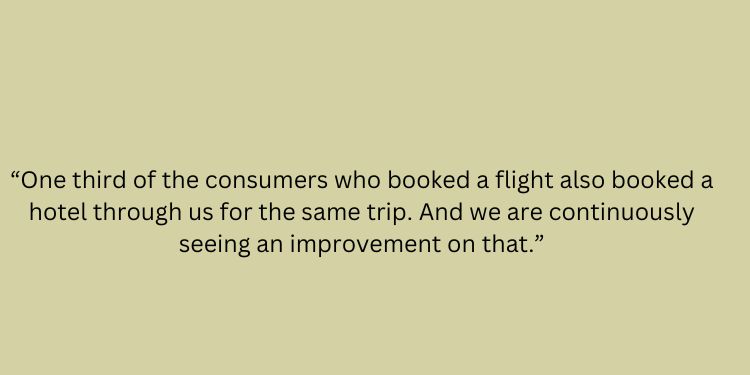 He adds, “One third of the consumers who booked a flight also booked a hotel through us for the same trip. And we are continuously seeing an improvement on that.”
He adds, “One third of the consumers who booked a flight also booked a hotel through us for the same trip. And we are continuously seeing an improvement on that.”
The number of new users is growing faster than it was pre-Covid too. This spike in the last three quarters has accompanied ad campaigns, notes Singh, underlining that there is room for further growth.
“Online hotel booking is still an under-penetrated market. There is headroom to convert people from offline to online. Our campaigns have been driving this shift. Since we are leading this drive, we get a majority share of the first time online bookers,” claims the CMO.
Singh says that while the overall number has gone up, and that the ratio of app to non-app users has remained the same pre-Covid to now. There are ongoing efforts to shift non-app users to the app.
Corporate Product
MakeMyTrip has a product, a travel tool called MyBiz, targeted at corporates and small businesses. It was launched with the premise that products in the corporate travel market were limited to the top enterprise layer. Below which, travel was managed either by travel agents or in the case of smaller companies, someone booking on a B2C portal, explains Singh.
“We thought that we could solve the problem and built a product through which corporates get access to good supply pricing. Secondly, they’re able to save costs via some amount of reporting controls. And thirdly, we could give a good, consistent experience for employees to book travel themselves,” he adds.
Over 50,000 companies are using MyBiz to manage their travel. Says Singh: “It’s a big opportunity for us and part of our strategic roadmap. We will keep investing in that opportunity.”
Year End
The festive season is usually a slightly slower season for travel with people spending time at home. And this Diwali also came with the World Cup in tow, keeping people home during the weekends. But there has been a healthy build back post Diwali, notes Singh – for inbound and outbound travels, across hotels and flights.
The year end is a very strong period for us. Typically it’s one of the peak periods for travel booking. And again, we are seeing really decent year on year growth,” he adds.
Brand, Media and Performance
While new customer acquisition is in focus as is pushing app usage, there is a conscious effort to build the brand rather than push the marketing dollars towards performance marketing.
“We are far more focussed on on building direct traffic versus traffic bought via performance. Secondly, we are clearly over indexed on the repeat users. Direct traffic and repeat users – that’s how we built this business. We kind of supplement it with performance. When a brand is very strong on consideration, the performance spends are also efficient. Our efficiency on search will almost be 3x better than our competition just because of a stronger brand,” contends the CMO.
In building the brand too, MakeMyTrip has stayed consistent like it has with its brand ambassadors. Cricket has been a mainstay.
“We still think cricket aggregates Indians. We have always been active on cricket and we haven’t changed that. Cricket still becomes a tentpole for our media planning. And I think we’ll continue to do it,” notes Singh.
But the media plan recognises that cricket is now viewed on multiple devices.
“We have moved our money significantly from linear TV to connected and digital. That said, we still spend on linear TV – it’s not that we have moved completely away, just that we have balanced it more towards connected and digital. Secondly, we’ve moved from a reach-based spend to a more impact-driven spend – towards impact, tentpole properties. We’ve moved from reach-driving media to impact-driving media,” avers the spokesperson.
MakeMyTrip made its presence felt during the ICC Men’s Cricket World Cup, the India-Australia series and it is now also on Bigg Boss.
Dual Brand Play
MakeMyTrip enjoys the advantage of having invested in building the category over 23 years.
“I actually can’t think about a category where the number one brand has so much advantage over the number two in terms of brand recall. What it does is it makes our spends and performance very efficient and the spends for anyone else extremely inefficient. To get the same kind of acquisition on performance a competing brand has to spend 3 to 4x,” reiterates Singh.
The other brands in the fray include Goibibo, which MakeMyTrip acquired in 2016. When MakeMyTrip enjoyed such clout in the market, what was the need for a second brand?
Singh explains, “Every brand works best when you have a bullseye audience in mind. And clearly India has such a large consumer base. MakeMyTrip is an all-encompassing brand, but then the tonality of engagement, the way we speak, the way our app is, it is more targeted towards a slightly affluent consumer.”
“There is a growing budget consumer as well. And the budget consumer is a slightly younger audience moving up – the first jobbers, people who want to travel but are constrained by income and so on. Goibibo is specifically focused towards that opportunity. Hence the way that app is, the experience, the listings on the app, the way we talk about Goibibo, the channels we use, are more targeted towards a younger, more budget audience,” he adds.
The CMO states that the dual brand play makes the marketing slightly easier with a sharper focus for each. MakeMyTrip plays the role of India’s one-stop travel app targeting a more affluent base of 35 years-plus, relatively higher income, more frequent travellers. Goibibo remains focussed on the budget opportunity.
“There’s hardly any conflict. When we also see the data of bookers, the subset between Makemytrip and Goibibo is extremely small. Hence it’s a two-pronged strategy on marketing that’s paying off,” he explains.
Internationally, the brand is currently diaspora-focused. In its second largest market after India, which is the GCC, the brand started off targeting Indians, but it is now eyeing users beyond. That entails a different marketing strategy, notes the CMO.
So what’s on the marketing agenda for 2024?
“We will keep on building domestic hotels. That’s been our primary task for the last three to four years. We continue on that journey of moving people from offline to online. And then, when they come online, they come to Makemytrip. Our second agenda now is that we build outbound, and we invest behind that. So that when consumers booking domestic with us start going to international destinations for the first time, they use us,” he adds.
Singh surmises, “We will start playing more strongly in the inbound opportunity, specifically targeted towards the Indian diaspora across the world.”
MN4U SYNDICATE
Feedback: [email protected]

